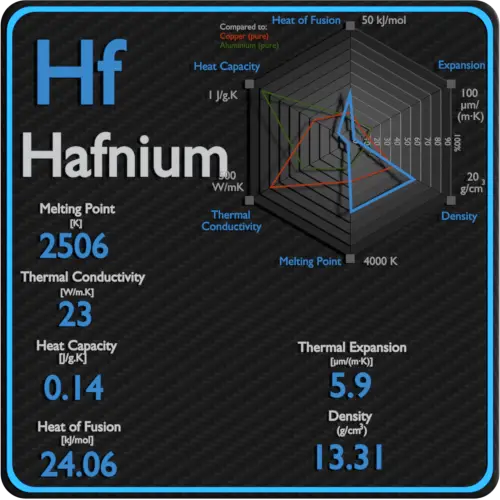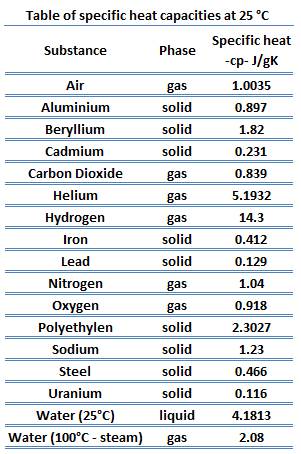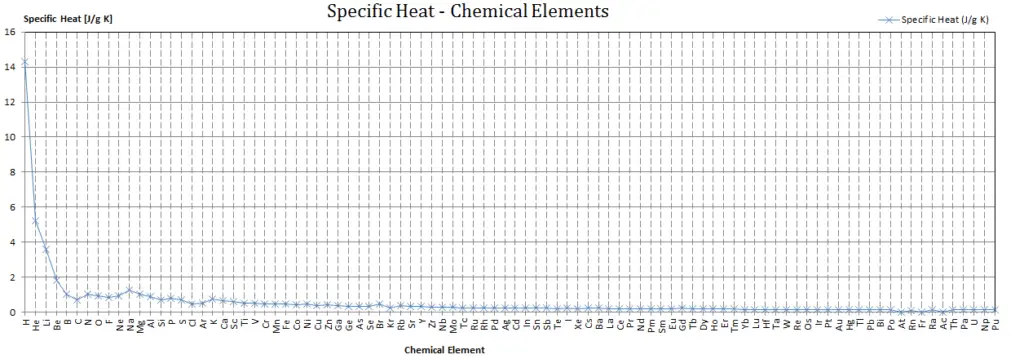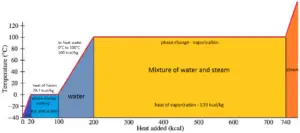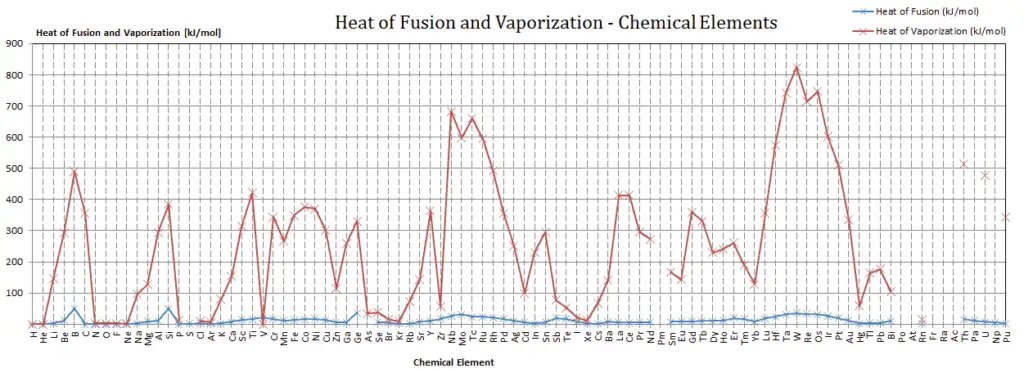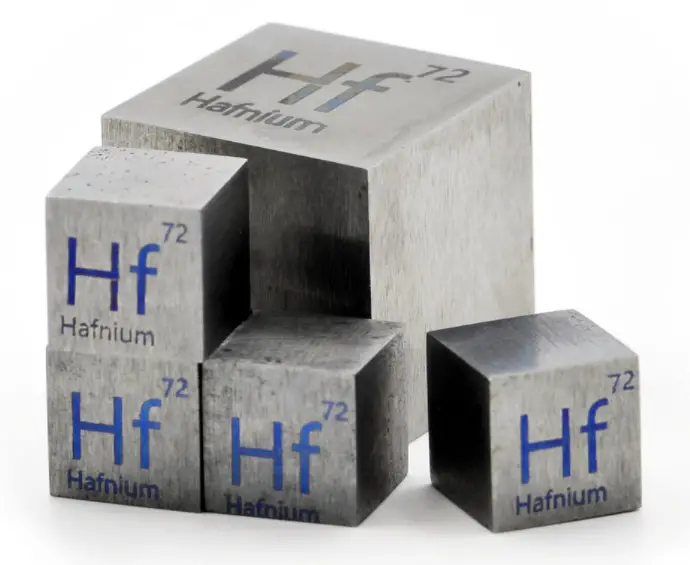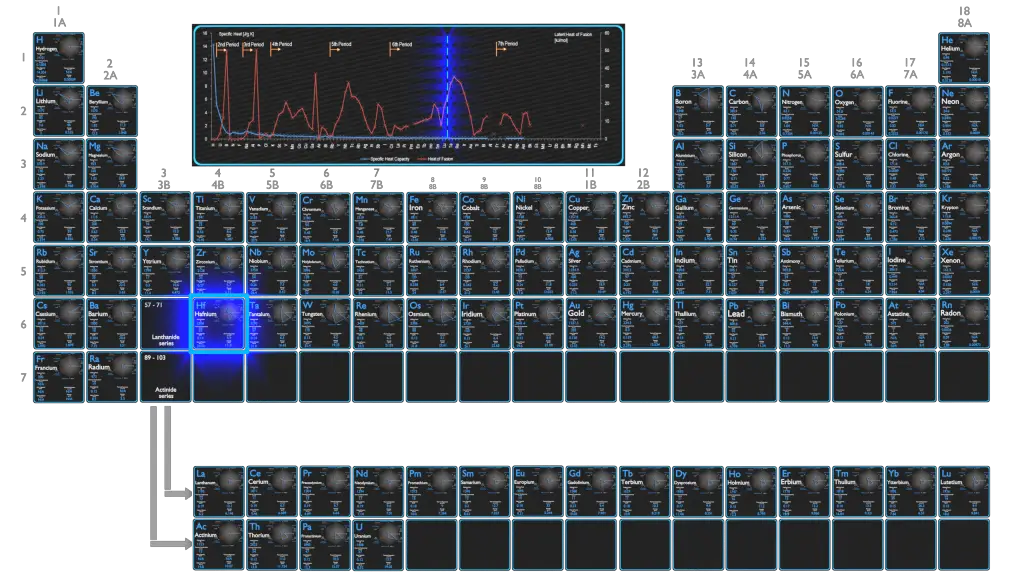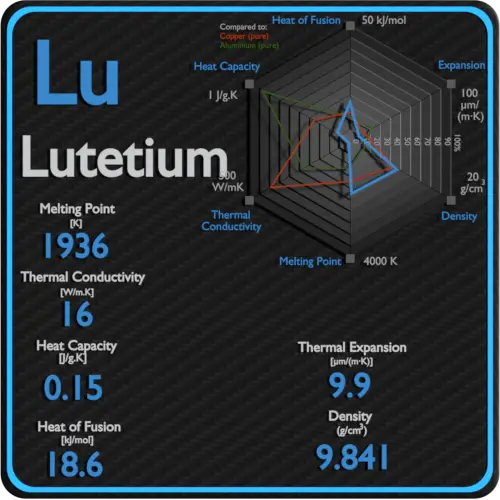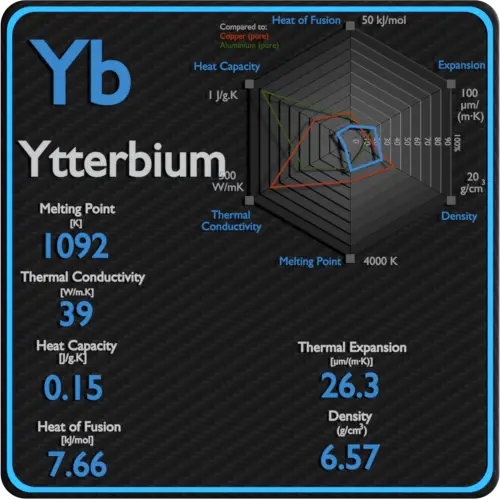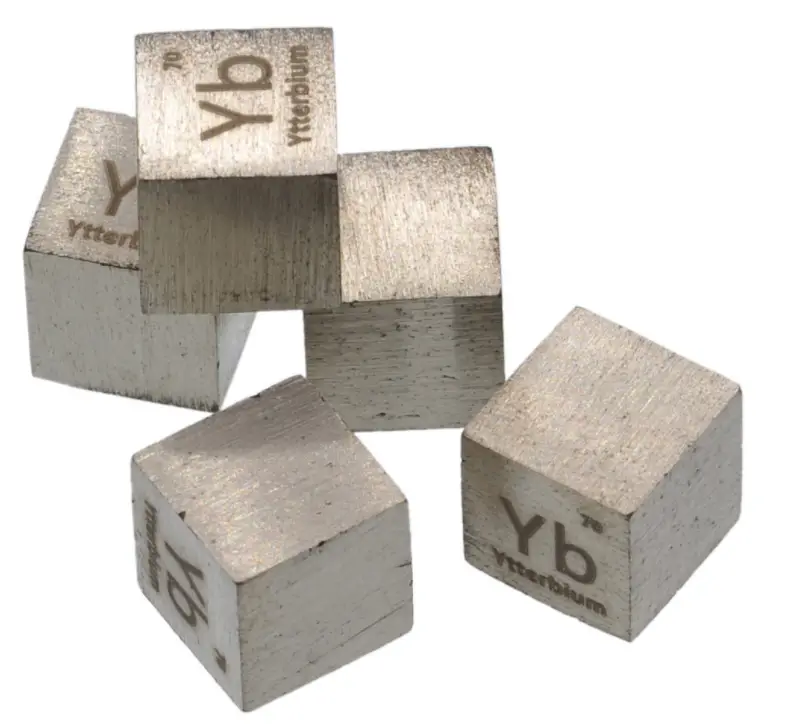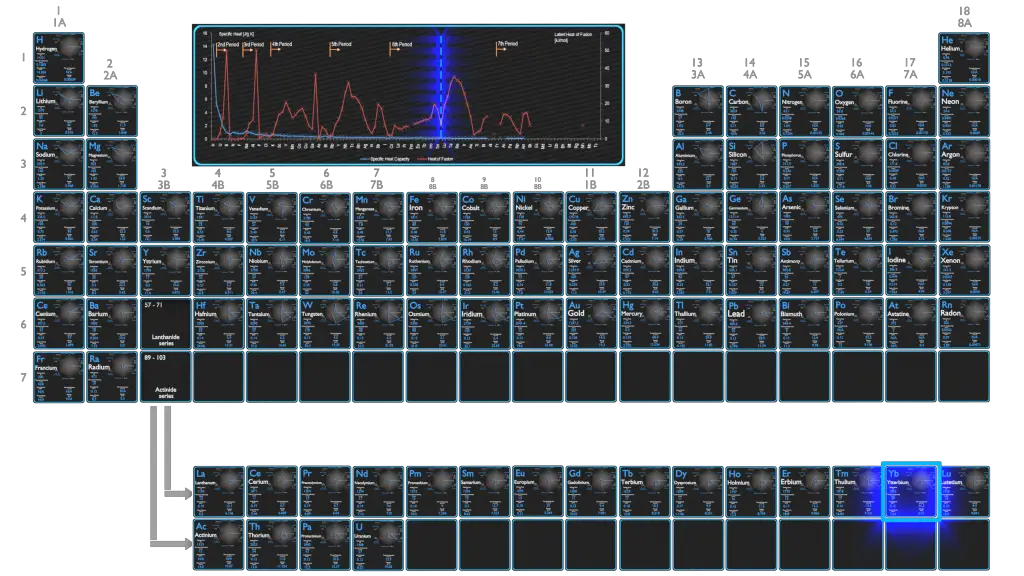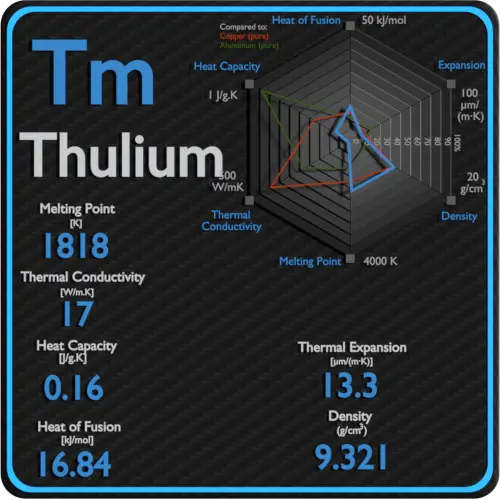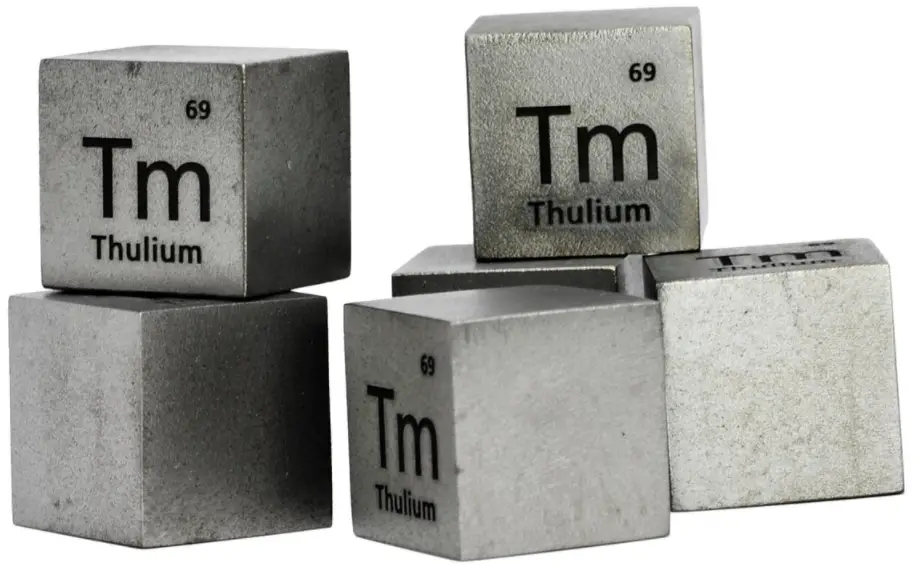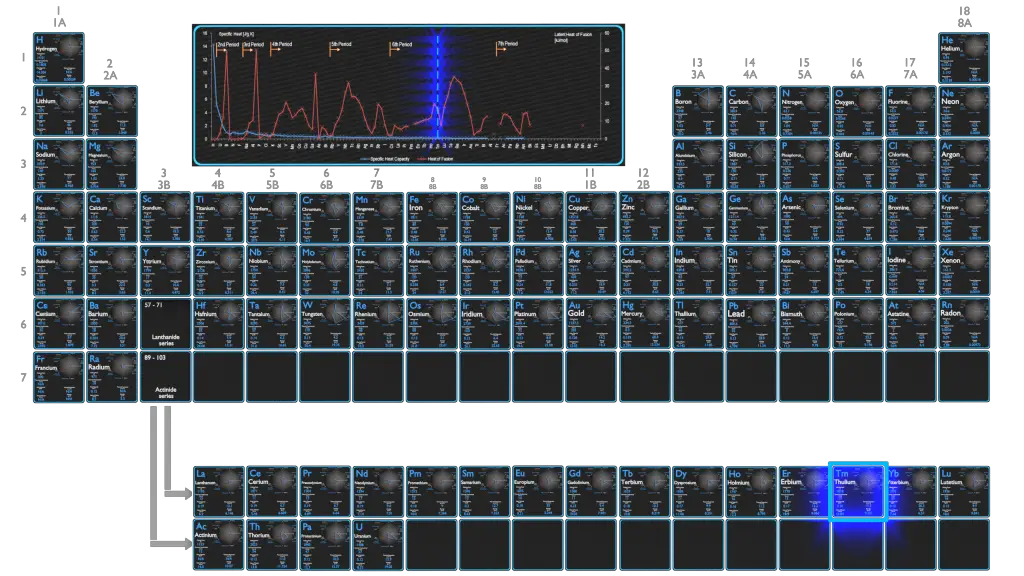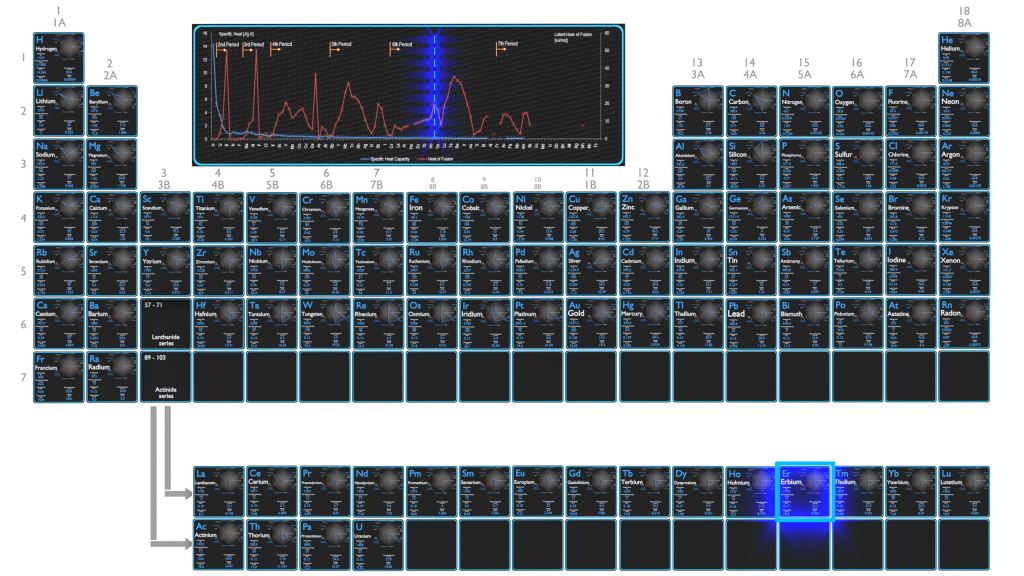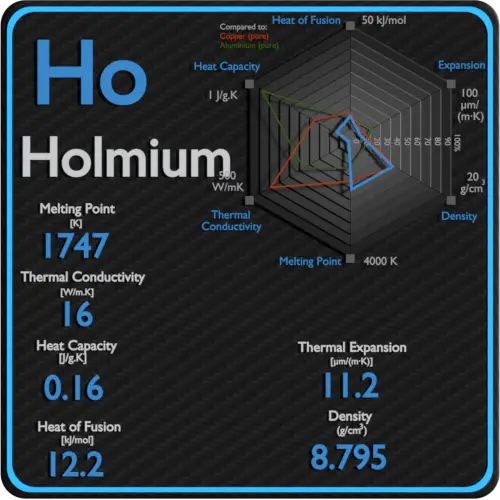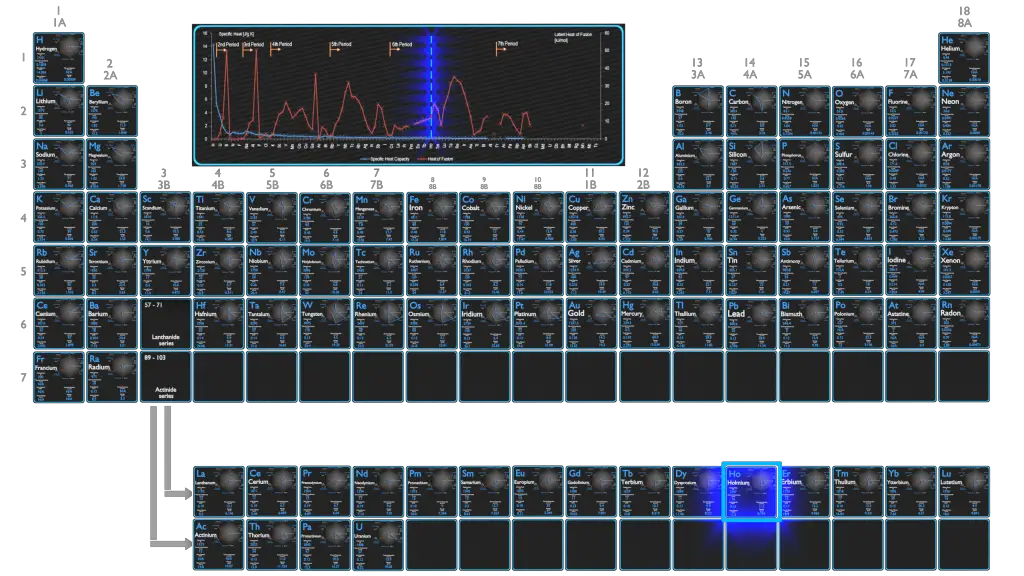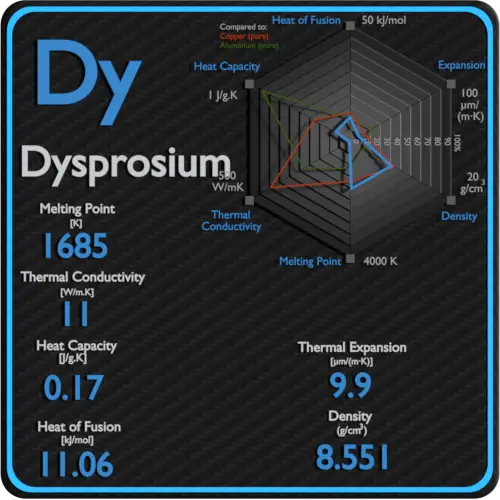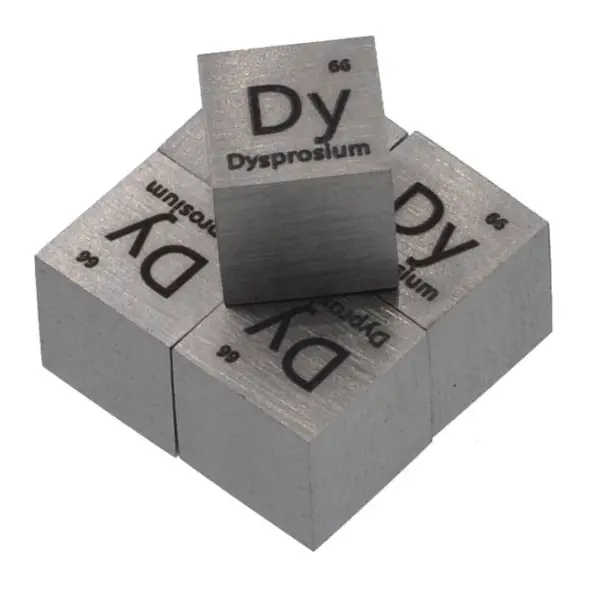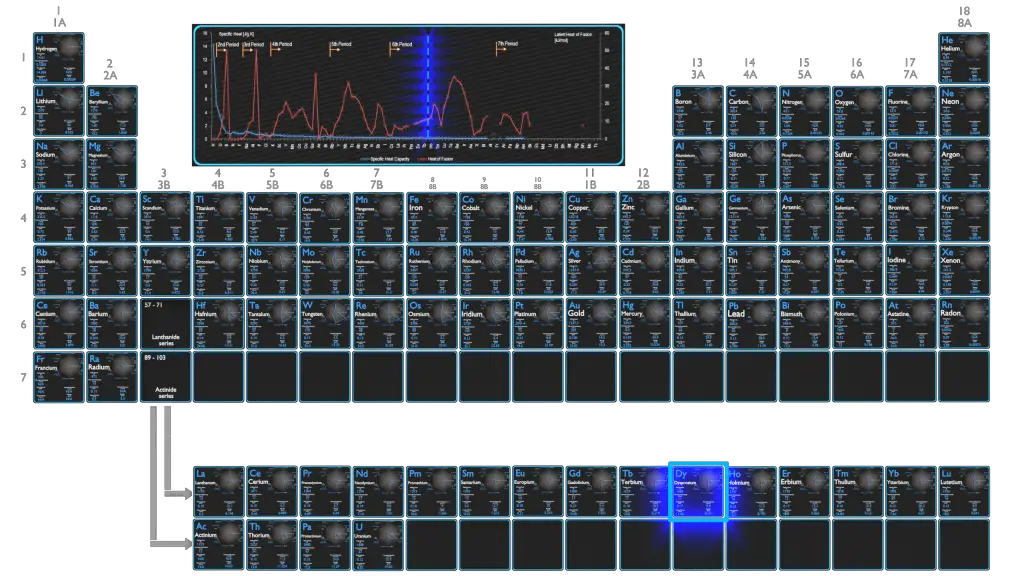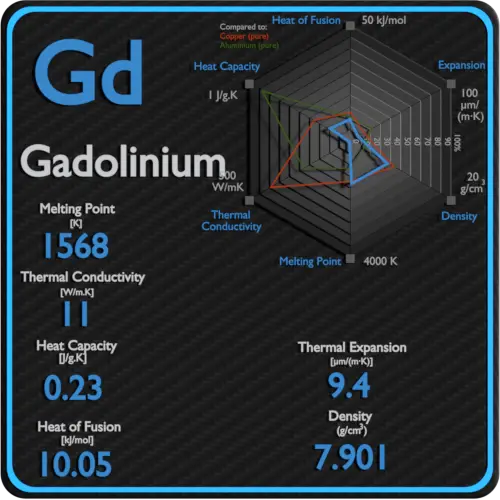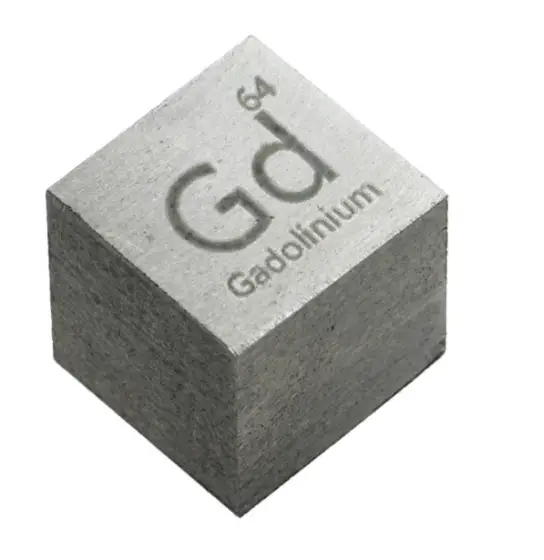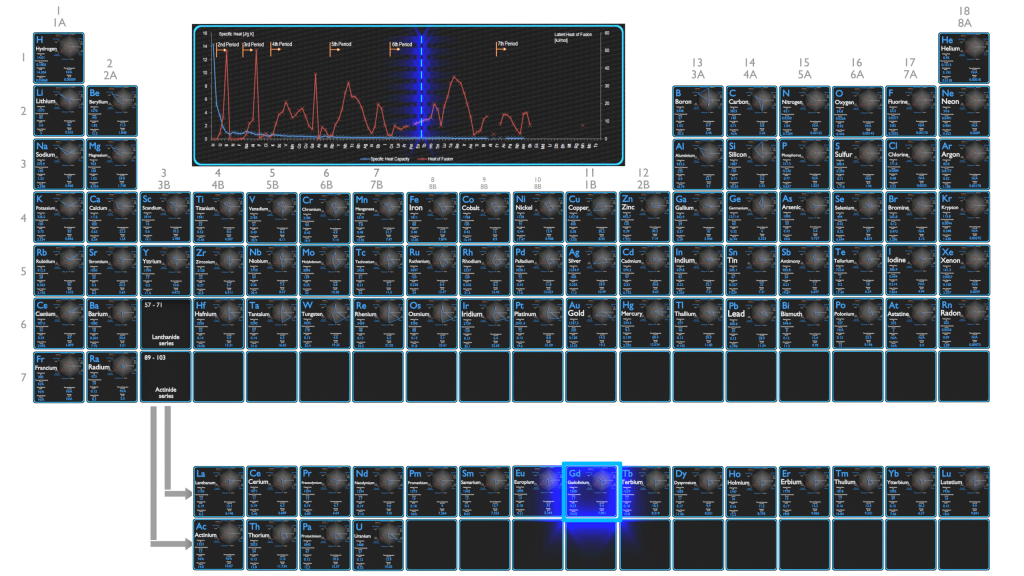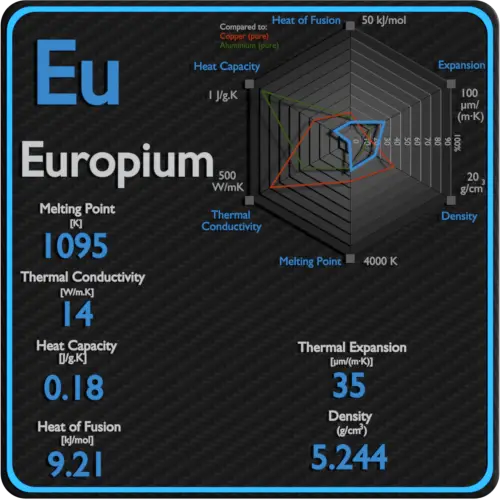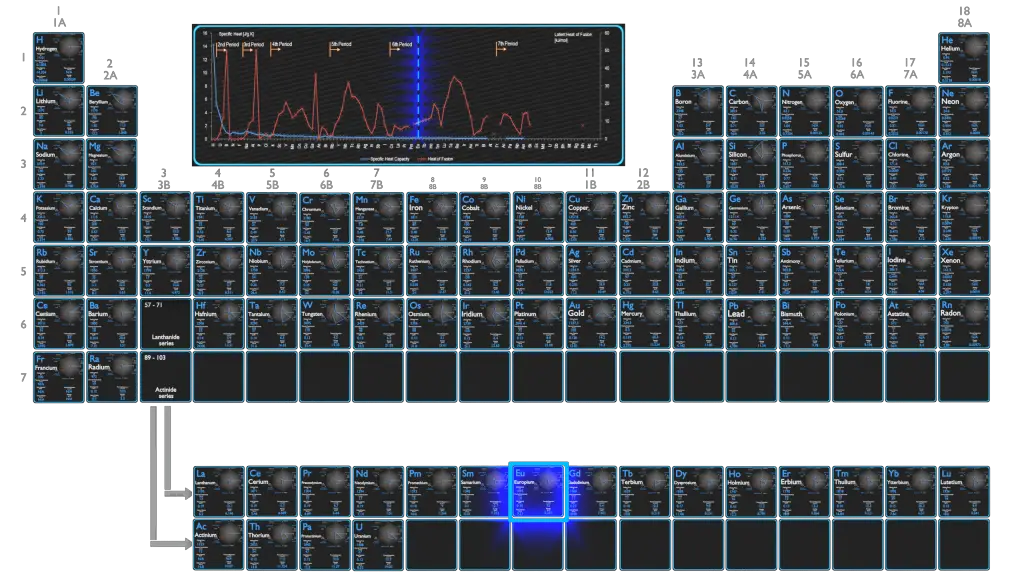About Hafnium
Hafnium is a lustrous, silvery gray, tetravalent transition metal, hafnium chemically resembles zirconium and is found in many zirconium minerals. Hafnium’s large neutron capture cross-section makes it a good material for neutron absorption in control rods in nuclear power plants, but at the same time requires that it be removed from the neutron-transparent corrosion-resistant zirconium alloys used in nuclear reactors.
Hafnium – Specific Heat, Latent Heat of Fusion, Latent Heat of Vaporization
Specific heat of Hafnium is 0.14 J/g K.
Heat capacity is an extensive property of matter, meaning it is proportional to the size of the system. Heat capacity C has the unit of energy per degree or energy per kelvin. When expressing the same phenomenon as an intensive property, the heat capacity is divided by the amount of substance, mass, or volume, thus the quantity is independent of the size or extent of the sample.
Latent Heat of Fusion of Hafnium is 24.06 kJ/mol.
Latent Heat of Vaporization of Hafnium is 575 kJ/mol.
Latent heat is the amount of heat added to or removed from a substance to produce a change in phase. This energy breaks down the intermolecular attractive forces, and also must provide the energy necessary to expand the gas (the pΔV work). When latent heat is added, no temperature change occurs. The enthalpy of vaporization is a function of the pressure at which that transformation takes place.
See also: Mechanical Properties of Hafnium
Summary
| Element | Hafnium |
| Specific Heat | 0.14 J/g K |
| Heat of Fusion | 24.06 kJ/mol |
| Heat of Vaporization | 575 kJ/mol |
| Density | 13.31 g/cm3 |
Source: www.luciteria.com
